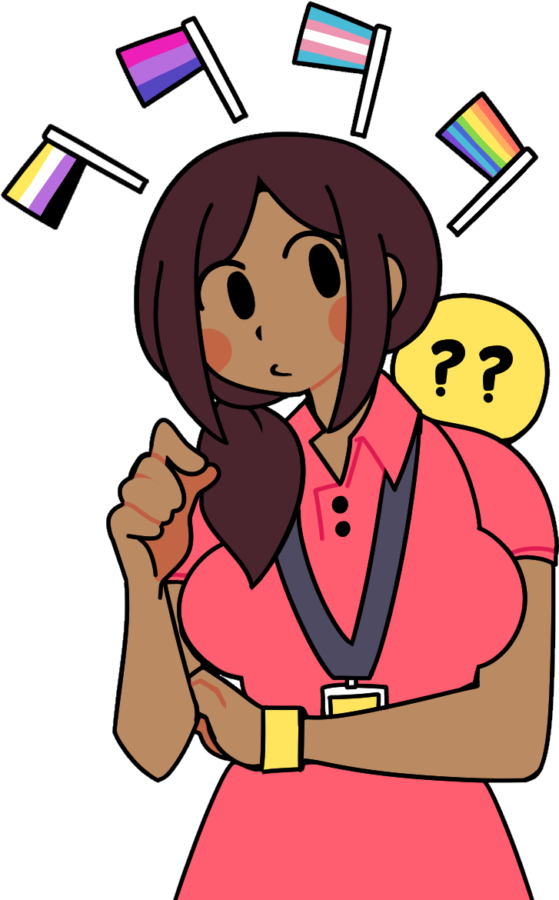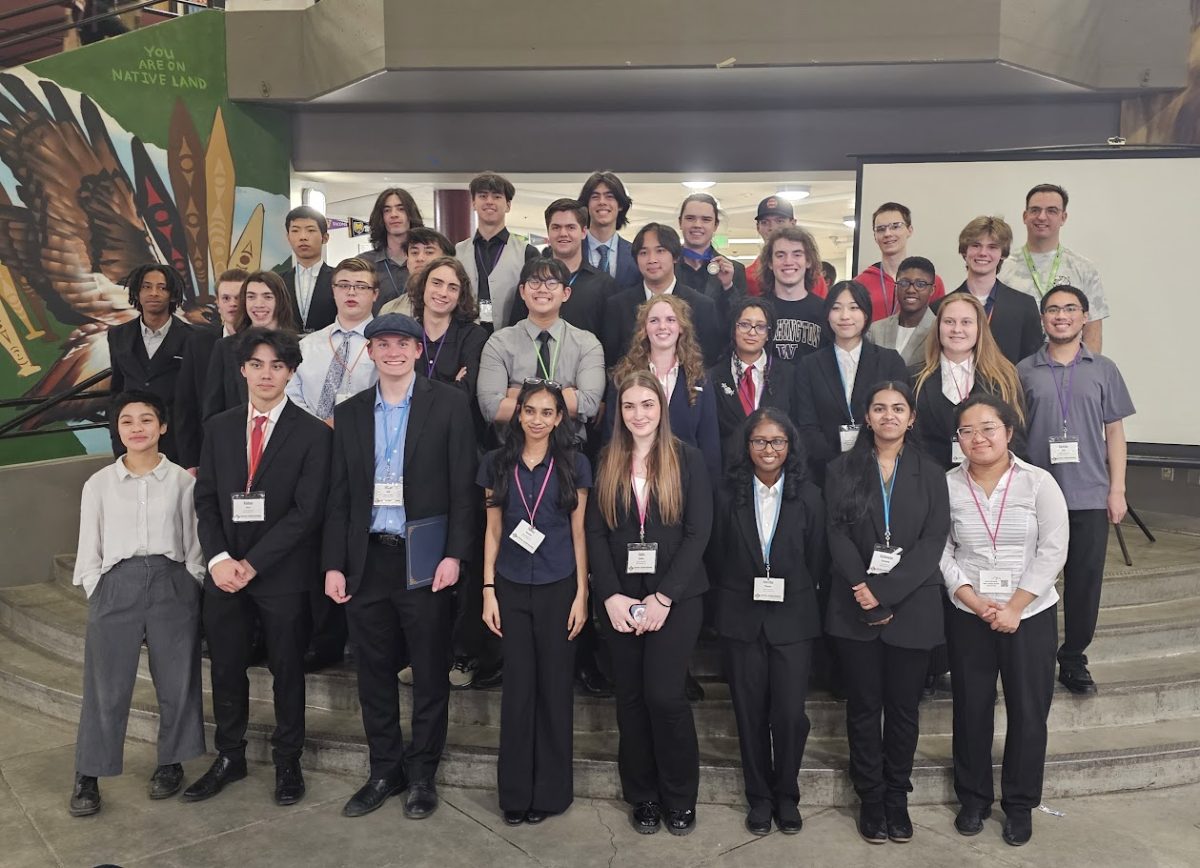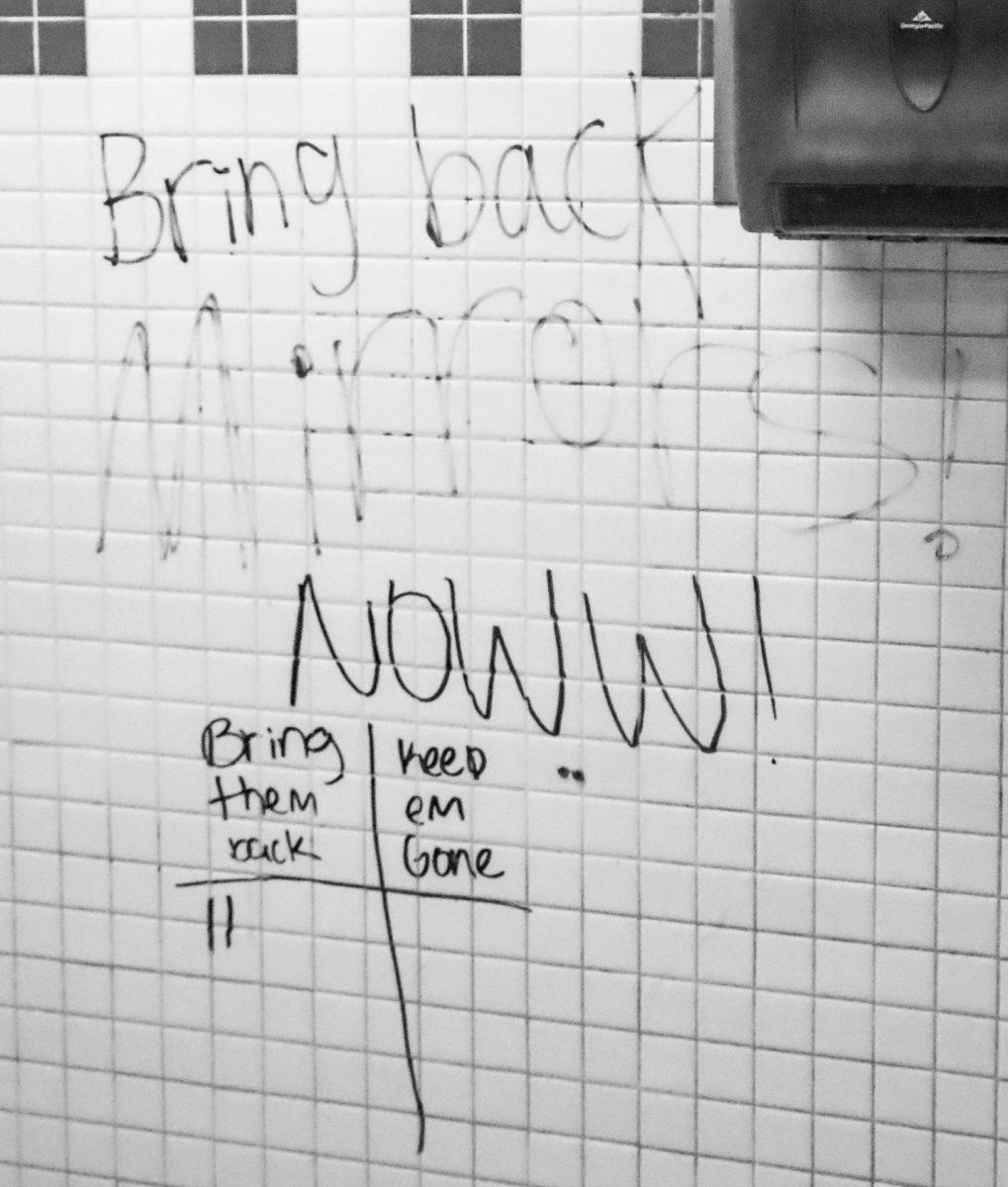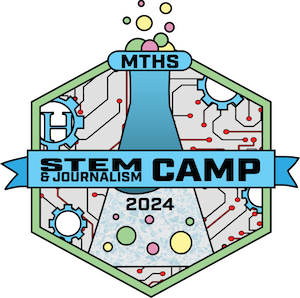For several years, the Edmonds School District has made an effort to work towards creating a more inclusive culture across the district, in buildings and in classrooms. This effort has included those with disabilities, people of color, people within the LGBTQ community and other groups that are otherwise overlooked.
Namely, before COVID-19 shut down schools for a year and a half, efforts were made to implement training for staff on how to create a gender-inclusive classroom. According to MTHS English teacher and Gender Sexuality Alliance (GSA) adviser Jennifer Widrig-Hodges, these trainings focused on correct pronoun usage as well as creating a more representative curriculum. However, despite the district’s efforts, the training kept getting pushed back due to one reason after another.
“We were supposed to have those trainings this year, but they [the district] thought the experience would be too impersonal over Zoom for such a sensitive topic, so it was delayed again,” Widrig-Hodges said. “There is definitely a push to do it [the training], but there is a lack of follow through on actually giving teachers the tools they need to make their classrooms gender inclusive, especially curriculum.”
According to Widrig-Hodges, creating a gender-inclusive classroom involves a lot more than just using the correct pronouns for students, though that is certainly very important. She said that it needs to go a lot further than that, and students need to be reflected in the curriculum that each teacher is teaching in the classroom. In order for that to happen, teachers need support.
While Widrig-Hodges knows that many teachers take their own personal time to do the research necessary to help create a more inclusive classroom, she doesn’t believe this is sustainable.
“The district needs to hire people to come in and do training and offer info to us in a way that is during staff time when we’re getting paid. We shouldn’t have to do this on our own in addition to a full-time job of teaching kids,” Widrig-Hodges said. “I know a lot of people do that [research on their own time], but if the expectation is that the classrooms are gender inclusive, gender training needs to officially be a part of what we do during our staff time so that we all get the training we need.”
Widrig-Hodges has taught at MTHS since 2013. Throughout her time at the school, she has become one of the faces of the staff equity team, serves as the GSA adviser and is known to be a strong ally for many groups. Among students, she is known as one of the most inclusive teachers at the school.
Widrig-Hodges’ inclusive classroom is something she has worked hard to build. She said a large part of why she is able to be as inclusive as she is is through observation and being willing to listen.
When Widrig-Hodges first began working at MTHS, she quickly involved herself with the GSA, helping to co-advise the club. Two years later, she would take over as the only adviser for the club.
Widrig-Hodges paid special attention to the way the organization was run, and she took the time to listen to the discussions students were having. Up until this point, she said she didn’t know much about the LGBTQ community, but listening to the students in GSA, her thinking changed.
“I didn’t know anything about the trans community, or even what non-binary was or anything until students in GSA taught me. Then, I began to research terms and things,” she said. “After a couple of years, we had a huge group of trans and non-binary students, and I realized they wanted to be treated like everybody else. They didn’t want their gender assumed and they didn’t want to be misgendered all the time. That completely changed my thinking.”
Around the same time, her youngest child came out to their family as gender fluid and bisexual. Widrig-Hodges, having always identified as a feminist herself, never cared what kinds of toys her kids played with or how they dressed. As she began to advise GSA and spend more time researching to find out more about the LGBTQ community, she realized that some of the practices she was following unintentionally set her kids up for having those conversations with her and knowing that they’d be accepted no matter what.
“Well, my youngest came out to us in the fourth grade. They came out to us and said they were gender fluid and bi,” Widrig-Hodges said.
As a parent, Widrig-Hodges made it a focus to make sure her kids knew what it meant to be an ally. Both of Widrig-Hodges’ kids started going to pride marches with their mom as toddlers, and she did her best to set an example of what it meant to be an ally while not placing stereotypical expectations on them as they grew up.
“I feel like I didn’t ever really care what toys they played with or what they wore. It didn’t matter to me, and that had a lot to do with the feminism ideas at the time, but I found out that that way of thinking was good for letting kids know it was okay to express their sexuality and gender, too,” Widrig-Hodges said. “I sort of accidentally made it so that my kids could defy the norms and figure themselves out.”
As she has helped her child go through the transitioning process and had conversations with them about their identity, it has opened her eyes to the challenges that come with that. Having a child going through those challenges has given her a direct view of the various struggles, one of which being navigating the healthcare system.
“It’s definitely been a journey of hormones and navigating the healthcare system, especially for someone who isn’t cis,” Widrig-Hodges said. “The students in GSA had mentioned some of those struggles, and now, I’m seeing that from a different perspective, navigating it as a parent myself.”
The term cisgender refers to an individual whose personal identity and gender correspond to their sex at birth. Those who are not cis do not identify with what they were assigned at birth, and for some, the transition can involve physical surgeries.
While Widrig-Hodges said her experiences with her own family have helped her become a better ally and understand her students better, it has also been tricky in some ways. As a parent who accepts her kids for who they are no matter what, it is difficult for her to remember that not all parents are as accepting, and while her first instinct is to tell her students to come out to their parents, they often remind her that this is not an option for them.
“Having my own experiences has made me better at supporting my students on their journeys. It’s harder because I forget that there are parents that are just so close-minded,” Widrig-Hodges said. “I really encourage students to come out to their parents if it is safe. Kids have to remind me that no, they can’t do that and they’re not ready. Part of me thinks it will be fine but I have never understood what that experience is like and I don’t have that perspective.
She said that sometimes, it can be a little confusing to be an adviser of GSA and a parent simultaneously with her own experiences, because she finds herself having to stop herself from imposing her experiences on parents who don’t have the same experiences. However, as she advises GSA and teaches her classes, Widrig-Hodges’ focus is to create the most inclusive culture she can while helping to advocate for more gender-inclusive classroom training for her colleagues.
Creating a gender-inclusive classroom takes work, and over time, Widrig-Hodges has figured out some of the biggest things to keep in mind.
“Using gender-neutral terms when addressing students. Not saying ‘boys and girls,’ ‘ladies and gentlemen.’ That’s first,” she said.
Asking for pronouns frequently and using them correctly, having representation in the curriculum in some way, putting posters up on the wall of LGBTQ members vital to each of the subject areas, highlighting important work they’ve done and talking about it in class. All of these things, Widrig-Hodges said, can make a huge difference.
“With English, for example, finding specific trans and non-binary authors so that we can get kids seeing that these are important people in our subject area is so important,” Widrig-Hodges said. “Call those out specifically and talk about them in class. If we don’t look at those identities and look at how people were treated, we’re missing out.”
She also said that it is important for teachers to realize that it’s okay to make mistakes. For example, the usage of correct pronouns is one of the most powerful ways to make students feel accepted in classrooms, but many teachers, Widrig-Hodges said, are afraid of getting it wrong, and because of this, they choose to not try.
“Just don’t worry. Just go for it and if you make mistakes, you can always apologize and correct,” Widrig-Hodges said. “You’re always going to be in the middle where you’re making mistakes, but rather than letting fear take over, just know that you will make mistakes and it will be okay.”
Over the years, Edmonds School District staff have attended trainings run by the Gay Lesbian Straight Education Network (GLSEN) in which they learn about how to create gender-inclusive classrooms, and how to best support trans students and GSA. They also learn about gender-inclusive curriculum.
GLSEN is a nationwide organization, with chapters across the country. Each chapter includes a variety of people, with some school teachers in the mix.
Tribecca Brazil, who today serves as the career specialist at MTHS, remembers one such GLSEN training from several years ago. She, like Widrig-Hodges, wasn’t super educated on the LGBTQ community up until this point, and she said this training opened her mind to a different way of thinking.
“The biggest thing that training gave me was just to be completely open to new info,” she said. “To assess myself and the terms I use or assumptions I had that are incorrect and making sure to ask questions.”
As a woman of color, Brazil said she can relate to dealing with microaggressions and having to prove one’s existence, which has helped her be there for students. However, she also said it is disappointing to see so many teachers refuse to use correct pronouns just because it is uncomfortable for them.
“It’s disheartening to see so many staff members refuse to use pronouns or refuse to break away from norms because it’s uncomfortable for them and not really noticing how it impacts students,” she said.
However, the training helped her understand certain terminology better, as well as allowing her to hear from students experiencing challenges of their own.
“It’s really helped me become a better advocate,” she said.
Widrig-Hodges and Brazil both emphasized the importance of inclusion for students’ mental health.
“It’s really important to make that shift to gender-inclusive classrooms because all of our research says that if kids feel supported, they do better at school and are less likely to harm themselves,” Widrig-Hodges said. “There are tons and tons of research that show that if one teacher is super supportive, that alone can make a difference about whether they harm themselves or not. It’s not just about the class environment. Kids’ lives are at stake here.”









